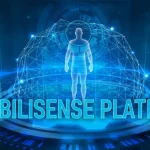The intersection of technology and funeral service has revolutionized how families commemorate loved ones and maintain connections across time and distance. Digital memorials now complement traditional funeral ceremonies, creating lasting tributes that extend far beyond physical memorial services while preserving cherished memories for future generations. These innovations not only provide practical solutions but also transform how communities celebrate, remember, and sustain the legacies of their loved ones.
Still curious? Here’s another read we think you’ll love.
Online Memorial Spaces
Online memorial websites have become central gathering spaces for extended families and friends who cannot attend in-person services. These platforms allow users to share photographs, videos, stories, and condolences, creating comprehensive digital archives that celebrate complete life stories rather than focusing solely on death. Families often find comfort in reading tributes from people they didn’t know their loved one had touched, discovering new aspects of their family member’s impact on others. Many platforms also allow for collaborative storytelling, where multiple contributors can chronicle life events and achievements, enriching the collective memory of the deceased.
The Rise of Live-Streaming Funerals
Live-streaming technology transformed funeral accessibility, particularly during the pandemic when gathering restrictions limited attendance. High-quality video and audio systems now enable remote participation in services, allowing distant relatives, military personnel, and medically vulnerable individuals to witness ceremonies in real-time. This technology has become standard rather than exceptional, with many families choosing to maintain streaming options even when in-person attendance is possible. In addition to broadening access, live-streaming allows families to record services for future viewing, creating a lasting digital keepsake that can be revisited over time.
Social Media Integration and Challenges
Social media integration creates both opportunities and challenges for modern memorial practices. Facebook memorial profiles, Instagram tribute posts, and Twitter remembrances can provide community support and ongoing connection, but they also require careful management to maintain appropriate tone and privacy. Funeral directors increasingly help families navigate digital etiquette and establish boundaries around online memorial activity. By offering guidance, directors ensure that online remembrances remain respectful and meaningful, reducing the risk of misunderstandings or unintended oversharing in emotionally sensitive spaces.
QR Codes and Multimedia Tributes
QR codes on traditional memorial items like prayer cards, programs, and monuments now link to comprehensive digital tributes. Visitors to gravesites can scan codes to access photo galleries, video messages, biographical information, and even audio recordings of the deceased’s voice. This technology bridges physical and digital memorial experiences, enhancing traditional cemetery visits with rich multimedia content. In some cases, QR codes allow visitors to contribute their own memories, creating interactive memorials that evolve and grow with community participation.
Virtual Reality Remembrance
Virtual reality applications are emerging as powerful tools for memorial experiences. Some families create immersive environments that recreate meaningful locations from their loved one’s life, allowing visitors to virtually walk through childhood homes, favorite vacation spots, or professional accomplishments. While still developing, VR memorial technology offers unprecedented opportunities for experiential remembrance. These immersive experiences can help grieving individuals connect more deeply with memories, providing therapeutic benefits that enhance emotional healing during the mourning process.
Digital Legacy Management
Digital legacy management has become an important aspect of modern death care. Families must navigate multiple online accounts, social media profiles, and digital assets after death. Funeral directors increasingly provide guidance on accessing digital accounts, creating memorial versions of social media profiles, and preserving digital photographs and documents that exist only in electronic formats. Proactive digital estate planning ensures that the memories, assets, and online presence of the deceased are preserved responsibly and respectfully for future generations.
Mobile Apps for Grief Support
Mobile applications designed specifically for grief support complement digital memorial services. These apps provide resources for understanding grief stages, connecting with support communities, and maintaining ongoing relationships with memorial content. Some applications include anniversary reminders, guided journaling features, and connections to professional counseling resources. By combining memorialization with practical grief tools, mobile apps extend care beyond the funeral day and foster long-term emotional support for family and friends.
Artificial Intelligence in Memorialization
Artificial intelligence applications in memorial services include chatbots trained on the deceased’s writing style and speech patterns, allowing ongoing “conversations” with departed loved ones. While controversial, these technologies appeal to some families seeking continued connection and comfort. Ethical considerations around AI memorial applications continue to evolve as technology advances. Many professionals stress that AI should complement, not replace, human remembrance, ensuring interactions remain meaningful and ethically grounded.
Security and Preservation Concerns
Digital memorial security requires careful attention to privacy settings, account management, and long-term preservation. Families must consider who will maintain digital memorials over time and how to protect sensitive information while allowing appropriate access for memorial purposes. Professional digital memorial services often provide ongoing management and security monitoring, ensuring that personal content is safeguarded against hacking, unauthorized edits, or accidental deletion.
Environmental Benefits of Digital Memorials
The environmental benefits of digital memorials align with growing ecological consciousness in funeral service. Electronic memorial books, digital photo sharing, and online guest registries reduce paper consumption while providing enhanced functionality compared to traditional alternatives. These options appeal to environmentally conscious families while maintaining the ceremonial significance of memorial activities. By combining technology with sustainability, digital memorials offer an environmentally responsible way to honour loved ones.
Cost Considerations
Cost considerations for digital memorial services vary widely based on complexity and ongoing maintenance requirements. Basic online memorial websites may be free or low-cost, while comprehensive multimedia presentations and professional management services require larger investments. Many families find digital memorial costs reasonable compared to traditional memorial products while providing enhanced value through extended accessibility and functionality.
Cultural Shifts in Remembrance
Digital memorials also reflect broader cultural shifts in how people remember and celebrate life. Traditional funerals often emphasize finality, while digital platforms encourage ongoing engagement. Families can update memorial pages on anniversaries, add new photos as they’re discovered, or share reflections years after a loved one’s passing. This evolving model reflects a move from one-time remembrance events to continuous legacy building.
Inclusivity and Global Connection
One of the profound advantages of digital memorials is inclusivity. Families spread across the globe can come together online in shared remembrance, eliminating geographical barriers. Whether through a live-streamed service, a digital guestbook, or a virtual memorial wall, these technologies ensure that no one is excluded from the grieving and remembering process, regardless of location.
The Future of Digital Memorials
The future of digital memorials likely includes augmented reality applications, advanced AI interactions, and integration with emerging social media platforms. Imagine visiting a cemetery and, through AR glasses, seeing a holographic timeline of a loved one’s life superimposed above their headstone. As technology continues advancing, funeral directors must balance innovation with reverence, ensuring that technological enhancements serve genuine memorial purposes rather than becoming mere novelties. The most successful digital memorial applications preserve the essential human elements of remembrance while leveraging technology to extend comfort and connection across time and space.
Bridging Memory and Innovation
Digital memorials represent the intersection of tradition and innovation, extending the reach of funeral services and creating enduring legacies for loved ones. By embracing these tools, families can honor memory, provide comfort, and maintain community ties while adapting to changing social, environmental, and technological contexts. As these practices continue to evolve, the human need for remembrance remains central, proving that technology can enhance, not replace, the timeless rituals of mourning and celebration.
To explore all our latest posts in one place, be sure to visit the 2A Magazine.







